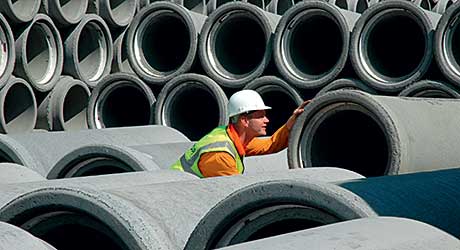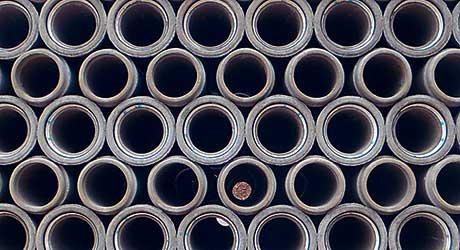
Stuart Crisp examines some of the environmental issues that need to be considered in waste water pipe specification
Government targets are behind a relentless drive to evaluate and reduce the carbon emissions of all aspects of construction. As a result of these targets, water companies have a very specific brief to monitor, measure and mitigate the environmental impact of their work.
There are numerous factors that impact on the environmental impact of a drainage project. One of the most important is the contribution to a scheme’s carbon footprint made by the materials used in its construction. Manufacturers have, of course, realised this and there is a plethora of competing claims for the sustainability of different materials. The problem for specifiers is in ensuring the validity of these claims.
The difficulty is further complicated because there are many gases that contribute to the greenhouse gas effect. In order to include the varying impact of different gases in a way that is easy to comprehend, all are expressed as a CO2 equivalent figure. For example methane is regarded by the Intergovernmental Panel on Climate Change as 25 times more damaging than CO2; as a result 1 kg of methane is reported as 25kg CO2 equivalent.
The Concrete Pipeline Systems Association (CPSA) is concerned that some standard databases used to rate construction materials are based solely on CO2 emissions. Whilst CO2 may account for the majority of gases emitted, the disproportionate impact of other greenhouse gases means that they should be included in any comparison. The manufacture of some plastics, for example, is known to emit significant amounts of methane gas; in which case by only reporting the CO2 figure, such databases may be under reporting the true CO2e figure by more than 25%.
What is needed is a dependable method of evaluating these assertions. CPSA has put down a marker by investing in independently certified research, using a recognised methodology, to assess the carbon footprint of concrete pipelines. By taking such a pioneering approach the CPSA hopes to establish an industry wide understanding of carbon accounting processes that can be used to reliably compare the carbon footprint of concrete with other products and solutions.
To ensure carbon footprint figures produced were dependable for concrete pipeline systems, the CPSA carried out its evaluation using the most widely recognised methodology as set out in the International Standard ISO 14040/14044 and Publicly Available Specification PAS 2050. Any such report should be validated by an independent third party to ensure it makes clear what has been included, and what has not, in the calculation.
As a trade association, the CPSA has been able to draw on carbon emission information from all its members to ensure that the figures are representative of the industry as a whole. The report concluded that concrete pipes have a CO2e per meter of 17.77kg for a 225mm diameter pipe up to 592.07kg for 2100mm diameter pipe. It should be noted that these accurately produced measures are significantly less than the generic figures for precast concrete given in many CO2-only industry databases, some of which can over report the carbon footprint by as much as 60%.
The CPSA has made clear in its independently accredited report that it has looked at all aspects of the manufacture of precast concrete pipes, manhole rings and cover slabs from cradle-to-gate. Beyond the factory gate, manufacturers have no control over where a site is situated, how a product gets to the site and the method by which a precast product is installed on site.

Of course, for water companies the carbon footprint of the manufactured pipeline product is only one part of the carbon footprint of an installation. Once on site another critical factor is the installation process and particularly the quantity of bedding material required.
One of the big advantages of using concrete for wastewater pipelines is that because concrete pipes are structural elements they contribute to the integrity of an installation. By contrast, plastic pipes are flexible and behave very differently with installations more reliant on site-based solutions to ensure they are structurally sound. As a result, plastic pipes can require significantly more bedding material compared to the equivalent concrete pipe.
Accordingly, to help specifiers, the CPSA audit includes a helpful cradle-to-site embodied carbon comparison for concrete and plastic pipes. This report clearly demonstrates that concrete pipes can have up to 35% lower embodied carbon when compared to plastic; the figure can be even higher once alternative bedding designs are included.
While the carbon footprint of materials used in any wastewater pipe installation is only one part of the scheme’s environmental impact, careful selection can make a significant different to a scheme’s over-all environmental impact.
The CPSA has commissioned three reports that cover the carbon footprint of concrete and provide the basis of any comparison with plastic; they can be downloaded from www.concretepipes.co.uk/sustainability.php






